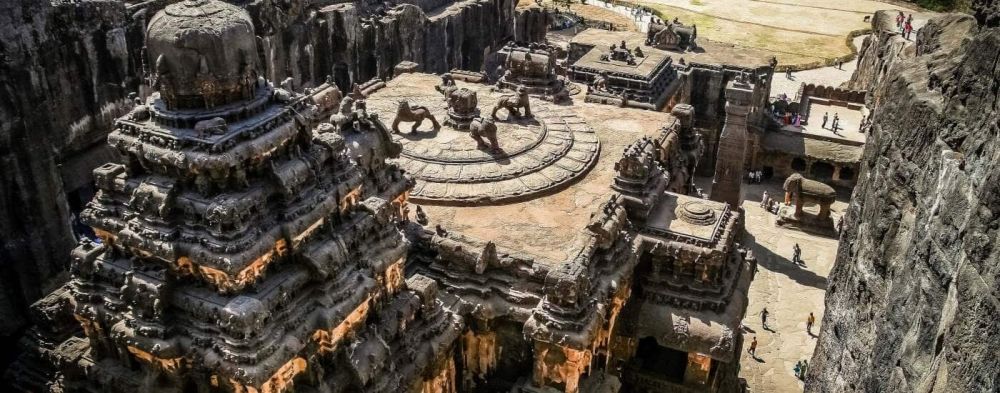

The Ellora Caves, located near Aurangabad in Maharashtra, India, are a magnificent example of rock-cut architecture that showcases the intricate fusion of three major religions: Buddhism, Hinduism, and Jainism. Recognized as a UNESCO World Heritage Site, Ellora represents the pinnacle of an era of tolerance and the convergence of faiths through artistic expression. With its origins stretching back to the 6th century, Ellora stands as a testament to the skill and depth of medieval Indian craftsmen.
The creation of the Ellora Caves began around the 6th century AD and continued for over five centuries. The site is home to 34 monasteries and temples, extending over two kilometers. The earliest structures are attributed to the Buddhist phase of the site and consist of monasteries, chapels, and large-scale sculptures depicting the Buddha. By the 7th century, with the decline of Buddhism and the revival of Hinduism under the Chalukya and Rashtrakuta dynasties, massive Hindu temples were excavated out of the rock, including the awe-inspiring Kailasa Temple.
The Jain caves, which are the last to be built, reflect a strict sense of asceticism combined with rich and detailed workmanship. Each group of caves was patronized by different rulers, reflecting a continuity of religious and cultural patronage over several centuries.
Tourism at Ellora has evolved significantly over the years. From a site primarily visited by historians and scholars during the British colonial period, Ellora has transformed into one of India's prime tourist attractions witnessing thousands of visitors each year. The increase in tourism has led to the development of infrastructure and amenities, including better roads, enhanced security, and tourist information centers to cater to both domestic and international visitors.
In recent years, tourism at the Ellora caves has embraced digital innovation. Visitors can now benefit from electronic ticketing systems, digital guides, and augmented reality (AR) applications that recreate historical settings and bring ancient tales to life. Responsible tourism is also being promoted to preserve the site's delicate eco-system and centuries-old art from the encroachment of modernization and environmental degradation.
Furthermore, cultural festivals and light and sound shows have been introduced to highlight the history and splendor of the Ellora Caves, thereby enhancing the visitor experience. The site's management continually strives to ensure that conservation is balanced with accessibility, allowing tourists to experience the majesty of the Ellora Caves while ensuring its preservation for future generations.
Ellora Caves remain an enduring symbol of India’s rich cultural mosaic and continue to be a beacon for scholars, historians, art lovers, and tourists from around the world.